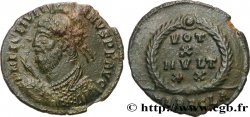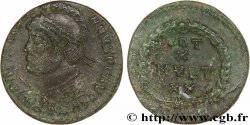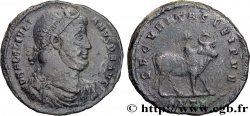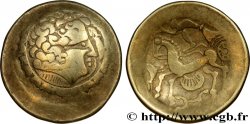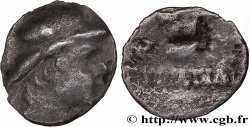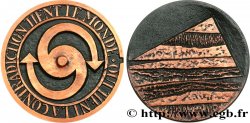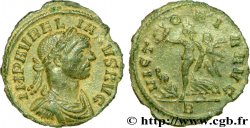MONNAIES 27 (2006)
Starting price : 500.00 €
Estimate : 700.00 €
Realised price : 655.00 €
Number of bids : 2
Maximum bid : 655.00 €
Starting price : 500.00 €
Estimate : 700.00 €
Realised price : 655.00 €
Number of bids : 2
Maximum bid : 655.00 €
Type : Double maiorina, (GB, Æ 1)
Date: 363
Mint name / Town : Lyon
Metal : copper
Diameter : 28,5 mm
Orientation dies : 6 h.
Weight : 10,18 g.
Rarity : R3
Officine: 1re
Emission: 9e
Coments on the condition:
Flan large, épais et lourd, très légèrement échancré à 7 heures. Portrait de Julien magnifique. Revers bien venu à la frappe. Extraordinaire patine vert foncé lissée
Catalogue references :
Predigree :
Cet exemplaire provient de la vente Gorny & Mosch 108, 3 avril 2001, n° 2085
Obverse
Obverse legend : D N FL CL IVLI-ANVS P F AVG.
Obverse description : Buste barbu, diadémé, drapé et cuirassé de Julien II auguste à droite vu de trois quarts en avant (A'a) ; diadème perlé.
Obverse translation : “Dominus Noster Claudius Iulianus Pius Felix Augustus”, (Notre seigneur Flavien Claude Julien pieux et heureux auguste).
Reverse
Reverse legend : SECVRITAS REI PVB/ -|.// LVGD OFF P.
Reverse description : Taureau passant à droite surmonté de deux étoiles.
Reverse translation : “Securitas Rei Publicæ”, (La Sécurité du bien public))// "Lugdunum officina prima", (première officine de Lyon).
Commentary
Poids lourd. Rubans convergents : rubans descendant verticalement le long de la nuque (type 3). Épaulière cloutée. Les ptéryges sont visibles sous le paludamentum. Nous n’avons pas relevé d’identité de coin pertinente. C’est le deuxième exemplaire publié. Prendra le numéro 286b dans le Supplément III du Bastien.
Heavyweight. Converging ribbons: ribbons descending vertically along the nape of the neck (type 3). Studded shoulder guard. The pteryges are visible under the paludamentum. We have not noted any relevant die identity. This is the second published example. Will take number 286b in Supplement III of Bastien
Heavyweight. Converging ribbons: ribbons descending vertically along the nape of the neck (type 3). Studded shoulder guard. The pteryges are visible under the paludamentum. We have not noted any relevant die identity. This is the second published example. Will take number 286b in Supplement III of Bastien







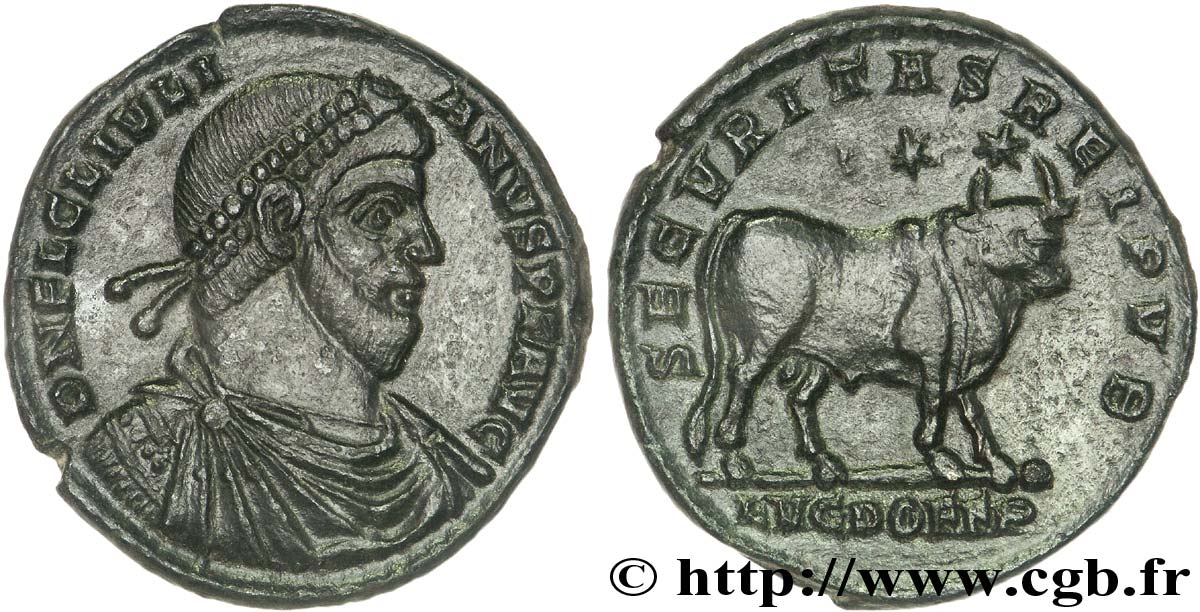
 Report a mistake
Report a mistake Print the page
Print the page Share my selection
Share my selection Ask a question
Ask a question Consign / sell
Consign / sell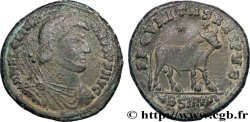
 Full data
Full data